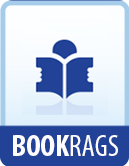’And surelie, had not the right honourable Sir Thomas Smith knight, principall Secretarie to the Queenes Maiestie, that noble Theseus of learning, and comfortable Patrone to all Students, and the right Worshipfull M. Nowell, Deane of Pawles, manie waies encouraged me in this wearie worke (the charges were so great, and the losse of my time so much grieued me) I had neuer bene able alone to haue wrestled against so manie troubles, but long ere this had cleane broken off our worke begun, and cast it by for euer.’
Between the dates of the Abecedarium and the Alvearie, Peter Levins, Fellow of Magdalen College, Oxford, published, in 1570, the first essay at an English Riming Dictionary, the Manipulus Vocabulorum, or Handful of Vocables, an original copy of which is in the Bodleian Library; it was reprinted for the Early English Text Society in 1867 by Mr. H.B. Wheatley. The English words are arranged in order of their terminations, and each is furnished with a Latin equivalent.
Of all the works which we have yet considered, Latin was an essential element: whether the object was, as in the glossaries and vocabularies before the fifteenth century, to explain the Latin words themselves, or as in the Promptorium and Catholicon, the Abecedarium and the Alvearie, and other works of the sixteenth century, to render English words into Latin. But a new stage of development was marked by the appearance of dictionaries of English with another modern language. In 1521, the ’Introductory to write and to pronounce Frenche,’ by Alexander Barclay, author of the ‘Ship of Fooles,’ was issued from the press of Robert Coplande; and about 1527 Giles du Guez or du Wes (anglicized Dewes), French teacher to the Lady Mary, afterwards Queen Mary, published his ’Introductorie for to lerne to rede, to pronounce and to speke French trewly.’ In addition to grammatical rules and dialogues, it contains a select vocabulary English and French. In 1514, Mary Tudor, younger sister of Henry VIII, became the unwilling bride of Louis XII of France. To initiate the princess in her husband’s tongue, John Palsgrave, a native of London and graduate of Cambridge, who had subsequently studied in Paris, was chosen as her tutor, and accompanied her to France. For her use Palsgrave prepared his celebrated Esclarcissement de la Langue Francoyse, which he subsequently revised and published in 1530, after his return to England, where he was incorporated M.A. at Oxford. The Esclarcissement is a famous book, at once grammar and vocabulary, and may be considered as the earliest dictionary of a modern language, in French as well as in English. It was reprinted in 1852 at the expense of the French Government in the series of publications entitled ’Collection de documents inedits sur l’histoire de France, publies par les soins du Ministre de l’Instruction Publique, Deuxieme Serie—Histoire des Lettres et




